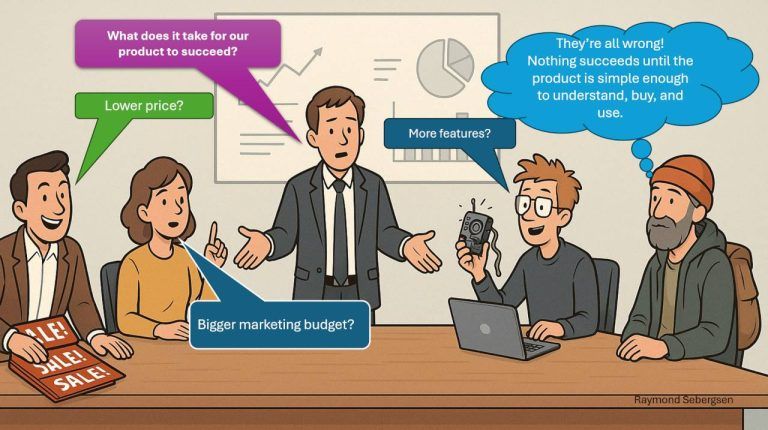I’m dedicated to the principle of E+1 (Expectations + 1) – the idea of always striving to deliver service that not only meets, but exceeds customer expectations. That means being proactive when handling inquiries, resolving issues quickly, and meeting customer needs in a way that creates truly outstanding experiences. Exceptional customer service is, after all, the cornerstone of every successful business.
While many retailers can create a positive impression during the purchase process, the real test comes when customers face issues or product-related challenges.
When Customers Encounter Problems
When something goes wrong, it’s essential that customers are met with understanding, empathy, and a solution-oriented approach. It’s not just about fixing the issue – it’s about showing the customer they matter.
A good vendor ensures that the customer feels heard and respected, while taking full responsibility for resolving the situation quickly and effectively. Sometimes, that’s as simple as asking the right questions, keeping the customer updated, or offering a small gesture of goodwill. Great customer service is about turning problems into opportunities for loyalty.
“We could have had some lovely days at work – if it weren’t for all the customers.”
Communication Is Everything
Keeping the customer informed is one of the most important aspects of good service. Few things create more frustration than being left in the dark. If a customer orders a product expecting it to arrive within two weeks, they’ll be pleasantly surprised if it arrives earlier – and disappointed if it arrives later.
But if, after two weeks, they’ve heard nothing – and more time passes without updates – disappointment turns into anger. In these cases, it’s often not the delay that’s the problem, but the lack of communication.
Most customers are willing to wait – even for months – as long as they’re kept informed and know what to expect. It’s the absence of information that breaks trust. Clear communication, regular updates, and honesty about timelines are key to preventing dissatisfaction – even when things don’t go as planned.

A Good Experience Worth Sharing
When I received a package from Cervera.no and discovered a broken wine glass inside, I mentally prepared for the usual frustrating process: paperwork, endless emails, and the hassle of shipping the item back before anything could be resolved.
But I was wrong. After reporting the issue, I was quickly offered a replacement or a refund – no questions asked, no stress.
The experience left me both impressed and surprised because it went against all expectations of red tape. Instead of taking weeks, it took just minutes to resolve.
Cervera didn’t just turn me into a satisfied customer – they saved time and resources for their customer service and logistics teams, and turned a problem into a story I still share today.
The difference between a good and an exceptional vendor lies in how they handle problems. The best ones see issues as opportunities to build trust, exceed expectations, and deliver service that creates not just satisfaction – but loyalty.

When Complaints Become a Hidden Cost Trap
Many companies spend unnecessary time and resources dealing with complaints. Long phone calls and endless email threads eat up time, instead of offering quick and simple solutions like Cervera did. This bureaucratic approach not only tests the customer’s patience – it also costs the business.
I recall a case where I spent over three hours on the phone with a retailer who insisted on troubleshooting a product I believed was defective and should have been replaced. The item was worth less than NOK 1,000, and it’s hard to believe the time spent was financially worthwhile for the company. That time could have been better spent serving other customers or improving internal systems.
By simplifying the process and cutting unnecessary bureaucracy, businesses can save time and money – while building trust and loyalty. Service should be a competitive edge, not a pain point. Simplicity and efficiency shouldn’t be the exception – they should be the standard.
Empower Employees for Consistent Service
Customer service shouldn’t be a lottery where the outcome depends on who handles the case. When employees have limited authority, issues often need to be escalated – causing delays and customer frustration.
Flexible policies that allow for different ways of handling complaints are essential. Some customers want a refund, others prefer a replacement or simply an acknowledgment of the issue. Companies that empower staff to make decisions – for example, by allowing them to offer compensation up to a certain amount without manager approval – enable faster and more consistent resolutions.
In Summary
The ability to provide effective support, troubleshooting, and resolution when things go wrong is often what separates good businesses from great ones. Exceptional vendors are those who consistently deliver top-tier customer service – ensuring customer needs are met, even after the sale is made.
Whether you run a business, work in customer service, or simply want to improve your interactions with others, delivering outstanding service is essential.
Every employee plays a role in creating a positive customer experience. By investing in training and building a customer-centric culture, businesses can ensure they consistently deliver service that goes beyond expectations.





